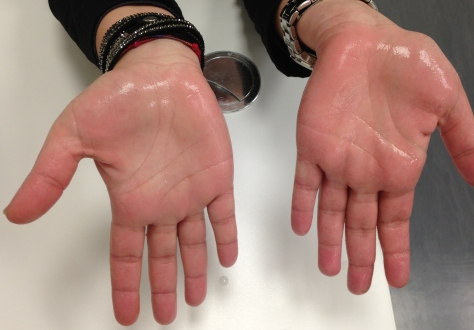Hyperhidrosis, or excessive sweating, can occur in various parts of the body, leading to discomfort and social anxiety. Fortunately, there are several effective treatment options tailored to specific areas affected by hyperhidrosis. This guide explores the most common areas impacted by Hyperhidrosis Treatment in Dubai and the treatments available for each.
1. Underarm Hyperhidrosis
Underarm hyperhidrosis, one of the most common forms, can lead to noticeable sweat stains and discomfort.
A. Treatment Options
- Antiperspirants: Prescription-strength aluminum chloride antiperspirants can be highly effective in reducing sweating in the underarm area.
- Botox Injections: Botox can block the nerves responsible for sweating. Results typically last 6 to 12 months and can significantly reduce sweating.
- Iontophoresis: A device that uses electrical currents to temporarily block the sweat glands. While more commonly used for hands and feet, it can be adapted for underarm use.
- Microwave Therapy: This procedure destroys sweat glands using microwave energy. It can provide long-term results, often lasting for several months to years.
- Surgery: In severe cases, surgical options like axillary sympathectomy, which involves cutting nerves that trigger sweating, may be considered.
2. Palmar Hyperhidrosis (Hands)
Palmar hyperhidrosis involves excessive sweating of the hands, making everyday tasks challenging.
A. Treatment Options
- Antiperspirants: Similar to underarm treatment, prescription-strength antiperspirants can be effective for the palms.
- Botox Injections: Botox can also be injected into the palms, offering relief for 4 to 12 months.
- Iontophoresis: This method is particularly effective for hands. It involves immersing the hands in a shallow tray filled with water while a mild electrical current passes through.
- Endoscopic Thoracic Sympathectomy (ETS): A surgical option that involves cutting the nerves responsible for sweating in the hands. This option is typically reserved for severe cases due to potential side effects.
3. Plantar Hyperhidrosis (Feet)
Excessive sweating of the feet can lead to discomfort, odor, and skin issues.
A. Treatment Options
- Antiperspirants: Foot-specific antiperspirants are available and can be effective.
- Iontophoresis: Just as with hands, this technique can be used for the feet to reduce sweating.
- Botox Injections: Similar to other areas, Botox can be injected into the soles of the feet for temporary relief.
- Surgery: In severe cases, surgical options like sympathectomy may be considered.
4. Facial Hyperhidrosis
Facial hyperhidrosis can affect the forehead, scalp, and facial areas, leading to excessive sweating and potential embarrassment.
A. Treatment Options
- Botox Injections: Botox is the most common and effective treatment for facial hyperhidrosis, with results typically lasting 3 to 6 months.
- Topical Antiperspirants: Prescription-strength antiperspirants can be applied to the face, but caution is advised to avoid irritation.
- Oral Medications: Anticholinergic medications can help reduce sweating, but side effects such as dry mouth and blurred vision may occur.
- Radiofrequency Therapy: This treatment uses heat to target and reduce sweat glands, providing a non-invasive option for facial sweating.
5. Generalized Hyperhidrosis
For individuals who experience excessive sweating throughout the body, a combination of treatments may be necessary.
A. Treatment Options
- Oral Medications: Anticholinergic drugs can help control overall sweating but may have side effects.
- Botox Injections: While more common for localized areas, Botox may be used for generalized sweating.
- Lifestyle Changes: Wearing breathable fabrics, maintaining hydration, and avoiding triggers can help manage symptoms.
- Iontophoresis: For individuals with multiple areas affected, iontophoresis can be a versatile treatment option.
- Surgery: In extreme cases, surgical options such as sympathectomy may be considered for broader issues.
6. Conclusion
Hyperhidrosis can significantly impact daily life, but various effective treatments are available tailored to specific body areas. Consulting with a healthcare provider or dermatologist can help determine the most appropriate treatment based on individual needs and the severity of the condition. Early intervention can lead to better management of symptoms and an improved quality of life.






Comments